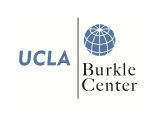
A joint project of the UCLA Burkle Center for International Relations and Zócalo Public Square
No Man’s Land: Globalization, Territory, and Clandestine Groups in Southeast Asia
by Justin V. Hastings
In the time of Skype and YouTube, it’s easy to believe that rampant globalization breaks down borders. But it is important to remember the distinction between these figurative borders and actual ones. For terrorists attempting to conduct day-to-day operations under the noses of government agencies and patrol groups, literal borders still pose great obstacles. Hastings analyzes three clandestine transnational operations in Southeast Asia, a region he describes as “the Wild West with Internet access.” Yet his findings provide insight into the actions of all non-state actors operating against the governments who control the borders they seek to leapfrog. Hastings argues that the more these organizations seek to incorporate themselves into a globalizing world, the more they become dependent on “chokepoints” such as airports and shipment ports. Leaving an examination of the root causes and motivations of clandestine organizations to another author, Hastings focuses on the lowest common denominator among these groups: they need to move people and things across borders without being noticed. Hastings’ detailed account of three transnational entities support the conclusion that ultimately, it is up to a state and its neighbors to decide how hard they want to crack down on clandestine terrorist organizations.
– Lina Kaisey
Buy the book: Skylight Books, Powell’s, Amazon
Power and the Past: Collective Memory and International Relations
Edited by Eric Langenbacher and Yossi Shain
Prior to 9/11, the word “terrorism” seldom evoked specific memories that all Americans could relate to. Nearly 10 years after the World Trade Center and the Pentagon were attacked, “terrorism” has come to symbolize a collective memory to everyone who lived through it. In Power and the Past, the various authors use examples ranging from the Holocaust to 9/11 to demonstrate the influence that collective memories can have upon foreign relations. As visceral results of historical events, collective memories influence identity and culture, and thus shape individuals’ views on foreign policy. As the authors explain how these memories influence international institutions and laws, they convincingly argue that collective memory is shaped by the politics of the time and is then used for political purposes. The political culture created by collective memories has reformulated the way nations interact with each other as they work to improve relations.
– Trisha Parikh
Buy the book: Skylight Books, Powell’s, Amazon
NATO: In Search of a Vision
by Gulnur Aybet and Rebecca Moore
“Take time off after pursuing a number of various projects to reconnect with yourself and establish an inner vision.” This may sound like advice for an actor after a busy movie-making season, but it is the course of action suggested by the authors of NATO: In Search of a Vision to remedy the international organization. After 60 years of existence, the authors argue, the North American Trade Organization has strayed from its primary function of serving as a collective organization that provides territorial defense for its members. The authors show that NATO’s shift to a mission-driven approach after the Cold War has made it less a protector of territory than a protector of values – an outcome appreciated by some members (among them the United States) and opposed by others. To avoid the dangers of a “bifurcated Alliance” in which some members support expeditions while others hold tight to the original mission of static defense, the authors argue, NATO needs a new common threat assessment to determine when and where it will get involved. It also needs to pursue new partnerships with organizations like the European Union, to make sure that it can be effective when it does decide to get involved. Along with promoting member solidarity so that nations don’t pursue deals that harm the group’s unity, these measures are meant to promote a new “strategic vision”–one that is not just reactionary, but suited to NATO’s propagation long past its 60th anniversary.
– LK
Buy the book: Skylight Books, Powell’s, Amazon
Deradicalizing Islamic Extremists
by Angel Rabasa et al.
As an effort to fight terrorism, deradicalizing Islamist extremists is particularly effective because it targets the root cause of the violence. Rabasa and his co-authors convincingly argue that successfully combating terrorist groups means not just pulling individuals out of the extremist system, but actually changing their ideologies so that they renounce extremism entirely and develop a new identity to reintegrate into society. But deradicalization is an extremely difficult goal to achieve due to the faith-based motivations of Islamist jihadist groups. A more realistic accomplishment, the authors argue, would be to foster disengagement from extremist ideology, which would be sufficient to prevent extremists from pursuing their goals in the short term. Although the results of deradicalization programs in Saudi Arabia seem to be effective, the success rates of these programs vary widely depending on the amount of government resources, time, money and labor committed. These institutional programs are a viable counterterrorism approach because they result in decreased membership in Islamic extremist groups while allowing governments to obtain information and discredit the extremist ideology; positively impacting global counterterrorism goals.
– TP
Buy the book: Skylight Books, Amazon
The UN Secretary-General and Moral Authority: Ethics and Religion in International Leadership
by Kent J. Kille
The power of the United Nations Secretary-General is matched only by the diversity in backgrounds of the eight men who have held the position. Secretaries-General have ranged in religious affiliations from Buddhism to Coptic Christianity, and for each, religion informed their notions of what role the United Nations should play. This collection of essays, each detailing one past Secretary-General, describes how each one’s religious background informed decisions they made in office. The various authors arrive at the conclusion that, while personal “inner codes” do govern a Secretary-General’s overarching goals, the “external code” of international relations, United Nations Charter Principles and era-specific job expectations also have a role to play. So, while Dag Hammarskjold promoted growth and Boutros Boutros-Ghali valued maintenance, each appreciated Trygve Lie’s observation that the Secretary General’s power is moral rather than tangible. It is much easier to lose moral power, so Secretaries-General have generally been careful not to overstep their bounds and turn the office of Secretary General into that of a “secular Pope.”
– LK
Buy the book: Skylight Books, Powell’s, Amazon
European Unions: Labor’s Quest for a Transnational Democracy
by Roland Erne
The emergence of the European Union and its emphasis on democracy has had extensive implications for the political regimes in place throughout Europe. While the countries within the EU appear to follow democratic policies individually, evaluating the nations in a transnational context shows that, too often, citizens are relegated to the role of powerless spectators. But because the EU was formed as a trade union, its unifying policies are primarily fiscal and monetary, limiting the pro-democratic actions it can take. In his analysis of labor unions and democracies, Erne attributes blames innate cultural and socioeconomic differences among European nations for the failure to agree on political philosophy. His pragmatic plan to move toward democracy relies on labor unions, which he characterizes as universal groups that span many borders and can connect the public sphere and encourage political mobilization. Once the EU embraces labor unions, collective bargaining and corporatism, it can progress toward becoming a more democratic union.
– TP
Buy the book: Skylight Books, Powell’s, Amazon
*Photo courtesy of rubygoes.





Send A Letter To the Editors